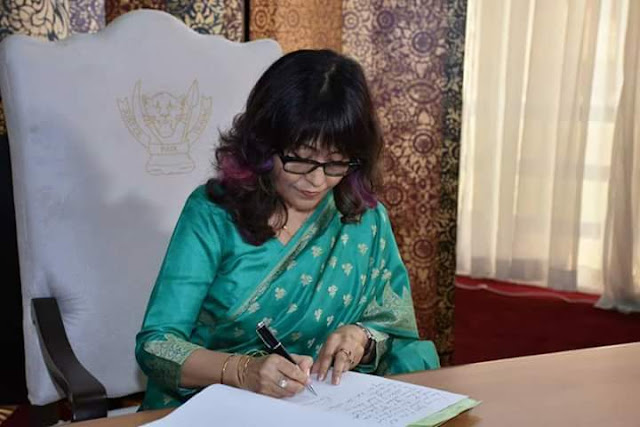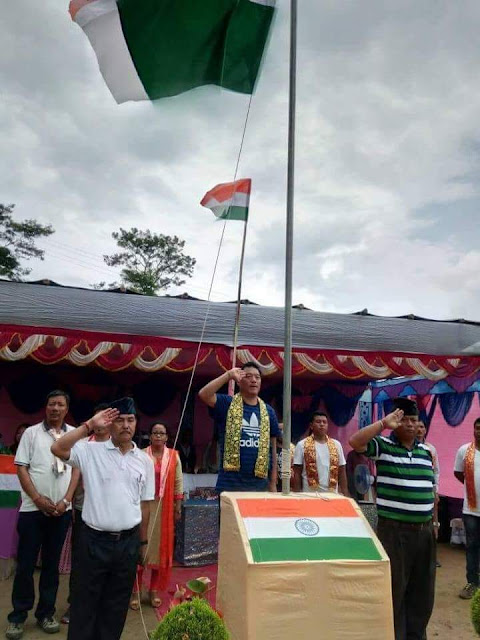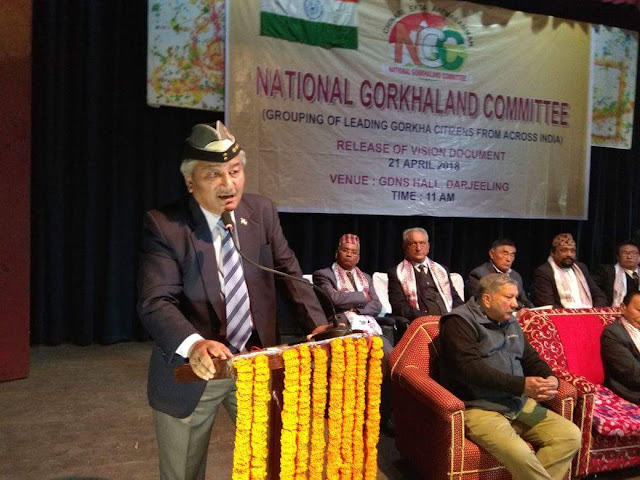Writes: Binayak Sundas
There are those Nepalis in India who are from Nepal and hold Nepali citizenship and then there are others who live in India and hold Indian citizenship
In the last few decades there has been a steady rise in literature on experiences of people visiting those parts of their socio-cultural spaces separated by partition. Hence people discover that the land that they grew up thinking as the quintessential other and enemy was not after all so different. The people, that they always thought of as the evil incarnate could have easily been neighbors, friends or even family. Such is the complicated history of the subcontinent and the problems of the concept of the nation-state in the region.

A person from Kolkata may find that he has far more in common with someone from across the border in Dhaka than he has with someone from his own state in Darjeeling. Similarly, a person from Lahore may find that Amritsar is far closer to home than Quetta or Karachi. These dilemmas and complexities have led to a plethora of beautiful, yet melancholic stories that have captured the imaginations of readers and caused them to rethink certain aspects of nature of nationalism and renewed connections across the border.
The partition of Punjab and Bengal in 1947, a tragic event of Himalayan proportions, and its aftermath are very difficult to be compared with anywhere else. It was an incident that was a product of specific historical events that were unique to the region and yet one cannot help, but wonder if similar literature is possible to be written between Indian Nepalis and Nepal’s Nepalis.
I have over the years of my research come across many academic literatures that have tried to clearly make the difference of Indian Nepali from those in Nepal. They have suggested the use of terms such as Nepa-mulya and Bharatiya Nepali, but nothing seems to have quite captured the imagination of Indian Nepalis, as that of the “Gorkha” since nothing speaks of pride like a colonial imaginary construct, used to garner cheap military labor. The two kinds of Nepalis in India are those who are from Nepal but are in India to work and earn their livelihoods and hold Nepali citizenship and the other who have lived in India and hold Indian citizenship.
The common perception is that the accents in their Nepali are the main marker of difference. This is, of course, a mistake since Nepal does not have a unified accent, neither do Indian Nepalis.
During my stay in Delhi, I had the privilege of making a lot of friends from Nepal, the picture that they painted of Nepal and its socio-economic dynamics seemed to be very different from the one that I remembered from the tales of my mother or my brief visits to Dharan and more importantly from the socio cultural and economic scenario in Darjeeling, the hub of Indian Nepalis. The language too seemed different; Bahuns, Ranas and Shah friends spoke a form of Nepali, that they claimed was the equivalent of King’s English. They were mortified when they heard me speak in Nepali, some were out rightly offended, some laughed and one friend said I spoke like a Taba Keta (drug addict) from Thamel.
Tracing the root
On my father’s side, my family was from Dolakha. Once, as my grandfather narrated the story to me, one of my ancestors, a Damai, accidentally touched a Brahmin bride on her wedding day, which caused her to lose her caste and the marriage was called off. By the evening the entire village was gathering for traditional Jhar Katnu (hacking him to death). How else would the groom’s and bride’s family regain lost honor and the rest of the village salvage the entertainment denied to them?
Maybe someone informed them, my family left the village with whatever little belongings they had before the mob arrived. Realizing that they could never go back home they made their way to the only refuge for the wretched of Nepal: Darjeeling, along with the Brahmin bride. This was a hundred years ago, during the same period the ancestors on my mother’s side were facing a different dilemma.
After the Gorkha state’s victory in Limbuwan hills, the state’s appropriating class were vigorously taking over Kipat (communal land holding) lands of Limbus and converting them to Jagirs (land grants given in lieu of salary). The Limbus rose in rebellion several times but failed. The only two way left for Limbus were: accept the Gorkha rule, new land revenue structure and a debt trapped life or leave the region altogether. My ancestors made way to Munglan (India) in search of the promised life.
The British at that point of time were perpetually caught in one conflict after other both in the western and eastern frontiers and were expanding Gurkha regiments to include the Rai and Limbus as well. This was a departure from the earlier policy of only hiring Magars, Gurungs, Thakuris and Khas. In the Gurkha regiment my ancestor was introduced to the brilliance of the martial race theory and how it manages to gain cheap military labor and can repeat it over generations. My family has served the British and Indian armies for the next hundred years.
I made my way across the River Mechi, but graves of my grandparents were on the other side of the border. I paid a visit to my great aunt and uncle’s graves on Nepal’s side of the Mechi River. Buried on the border, was perhaps a fitting metaphor for what I was to discover in the coming days. On a lighter note, it was a bit ironic that they were buried next to each other. In life they could never stop bickering.
Journey to Nepal
A few brief anxious moments circling Kathmandu and then we landed. My first steps in the city that I had read and written about but never visited. I looked around and saw what the Malla rulers must have seen, large hills surrounding the valley, like massive walls that could never be breached. A fortress that had stood the test of time, of course until Prithvinarayan Shah came. Prithvinarayan too saw the hills and he too realized they were walls, except they were not the walls of a fortress but that of a prison.
He imprisoned the Mallas within the valley until they did not even put up an effective fight, choosing to rely on faith than in a final battle as the Gorkha army walked into the city. My introductions to the city were the taxi drivers and they were exactly like the ones back home. Their Nepali was exactly like mine, perhaps a bit more polite, which made me wonder where were those who spoke in “King’s Nepali.” I never had a problem with the language while my stay there. The only problem though was that the people in Katmandu and even in Pokhara for that matter spoke too softly and I realized that I must have sounded like I was screaming half the time.
The driver started to complain about administration and corruption. I felt at home again. The night of course belonged to Thamel, I had heard a lot about this place, but nothing prepared me for what I experienced. The Sarangi players made me realize how amateurish the ones in Darjeeling and Sikkim are. The people, the shops, the bars, they could trap anyone here for a long time. I walked around aimlessly until late at night and I made my way back reluctantly to my hotel.
The next day I made my way to the old city and this place felt alien. Don’t get me wrong I loved the place, the culture, the architecture and the people but none of it seemed familiar to me. It was beautiful but foreign to me, the Newari accent seemed curious and it was not one I had heard before, well at least in real life. The Newars in Darjeeling and Sikkim have long given up the language and no hint of this accent remains in their Nepali. The smell and the sight of this place seemed odd. I wondered if the first soldiers of the Gorkha army felt this unease and strangeness of this place.
Perhaps the strangeness of this place was what caused Prithvinarayan to lament about the simple life of home, where people drink from streams than this valley where water comes in cisterns. As I placed my hand on the old walls with the sun uncomfortably on my back, history was alive for me. The debates over socio-economic structures, class relations, the impact of new ruling class, modes of production etc were all forgotten and a different kind of history took its place—the one that had the thrill of living through it, of extending your hand through time to capture a moment gone by, a history of emotions so to speak.
I did not go to any of the palaces though. I watched all of them from across the road. A hundred years ago I would have been flogged for just being this near the royal palaces or any other palaces. I have been inside palaces elsewhere of course, but somehow the resentment here seemed very personal, anger with these Rajput status claiming rulers went back far too long back in history, I doubt if anyone else could even understand it.
The structures as magnificent as they were, just did not impress me, every brick of these palaces was wet with the tears of some indebted peasant who was forced to sell his children to pay the Sarkar and Sahukar. As I blew my smoke towards the palace I smiled to think of the fact that they no longer lived there, at last they would know the pain of leaving their homes behind. All that money, all that eulogies and all that false status, and son had killed fathers and brothers had killed brothers, in the end just dust in the vast expanse of history, like the rest of us.
My mother had lived in Pokhara for two years in her youth, back then when teachers from Darjeeling were in demand in Nepal. A visit to this town was mandatory, but nothing about this place seemed like the stories I had heard. As mesmerizing as the lakeside was it was easily eclipsed by the next place I visited, Mustang. You could write several books about this place and still could not do justice to this desolate beauty.
My mind could not help, but think of all the Newari traders and Tibetan scholars who might have passed through this place or places like this, what they must seem what fears they had and how this place looked to them. My heart also could not but think of all the soldiers of the Gorkha army as they first crossed to invade Tibet and how frostbitten defeated they retreated with the great Chinese general Fu’ Kwan hot on their heels, on his way to invade the Gorkha empire.
Muktinath temple deserves an article by itself, a great remnant of the syncretic traditions of the Himalayan region, perhaps a remnant of the Khas Empire itself. The place perfect for worship, it reminded me so much of the Mahakal Mandir in Darjeeling, thought it also made me lament thinking of the commercialization of the temple at home.
We are all Nepalis
In most places I was asked of my caste, though I don’t think it was so much of the apprehensions but mostly due to curiosity, my Limbu and Damai heritage has given an interesting face. The fun part was when I told them I was Damai, one shopkeeper laughed and when he realized I was serious he quickly diverted the topic, a security guard turned all shades of yellow and some went on long monologues how caste didn’t matter in modern Nepal, which sort of proved to me that it did.
The one thing I realized was Darjeeling accent was not a unique accent and it was a mere extension of the eastern accent of Nepal with a bit of Janjati and a perhaps a little bit of Madhesi accent. We were not different at all. We are all a part of a larger socio cultural space. We are all Nepalis. As I made my way back across the border leaving behind a place where everyone spoke in my language, into a place where people spoke languages that I did not speak, I wondered where home was.
The author is a PhD researcher at Centre for Historical Studies, School of Social Sciences, Jawaharlal Nehru University
Via: My Republica
Author can be reached at: binayaksundas@gmail.com





















.jpg)
